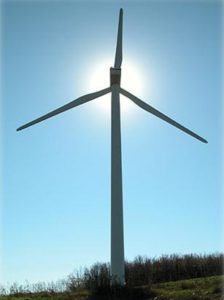Keys to Energy Independence – Part 3: Renewable Energy
 In order to achieve energy independence in our homes, we need to create a net-zero energy home. In short, this is where we produce as much energy as we consume using any number of renewable forms of energy. The first two parts of this three-part series focused on using energy conservatively and efficiently. Once you have reduced your consumption so that you’re not wasting half your energy, you’re ready to invest in your own renewable energy system.
In order to achieve energy independence in our homes, we need to create a net-zero energy home. In short, this is where we produce as much energy as we consume using any number of renewable forms of energy. The first two parts of this three-part series focused on using energy conservatively and efficiently. Once you have reduced your consumption so that you’re not wasting half your energy, you’re ready to invest in your own renewable energy system.
From a global standpoint, there is no “silver bullet” that is going to replace our mix of fossil fuels. That should be no surprise – neither coal, oil nor natural gas would be a panacea solution even with unlimited supplies. However, the mix of renewable sources of energy forms “silver buckshot.”
Virtually all of our power originates from the sun. This great fireball in the sky produces more energy than is fathomable – it has been cited that more energy falls on the earth in one hour than what is used by the entire human population in a year. Clearly, this is an abundant resource that has tremendous potential.
The sun’s energy is the basis of fossil fuels, as the decayed plant matter originated from photosynthesis. The condensation of water from sunlight causes clouds to fill, rain to fall, and rivers to run. While much of the solar radiation is absorbed and stored in the earth, the irregular heating causes weather patterns and the resulting winds.
Solar energy can be converted to electricity with photovoltaic (solar PV) systems, or the thermal heat can be transferred to water or air. Solar PV systems are becoming much more affordable, particularly with the host of financial incentives now available. The solar arrays must be oriented south, facing the sun, in order to most fully capture the sun’s energy. So if you have a south-facing roof (or property to install a ground-mounted system) you should be able to create a cost-effective solution.
Wind is another attractive source of renewable energy. It has been widely cited that there is enough wind in three states – Texas, Kansas and North Dakota – to satisfy the demand of the entire country. The problem is that our outdated grid is not designed to distribute the power long distances, and the electricity is not easily stored. Many people are interested in using wind to power their home or business, and it makes sense if you live in an area that has 12 mph average winds and sufficient property. It certainly won’t work for everyone though.
Your renewable energy system can be grid-tied to supplement existing power, or you can have an off-grid system that charges batteries off of which your lighting and appliances run. With grid-tied systems, you can store your power on the grid in the rare situations when you produce more than you consume. If you want to protect yourself from occasional power outages, you can include a battery backup system to power your essential lighting and appliances, usually from 1-2 days to as much as a week! The switchover is transparent, and provides peace of mind in an increasingly unstable time.
Bottom Line
There have been a number of moments in American history where we came together and focused our efforts to produce something remarkable. The dark days following the Great Depression created an electrified and better-connected country. In WWII, we rationed our resources, retooled our factories, and put women to work while men enlisted in the military. In the 1960’s, our space program put a man on the moon. With leadership and commitment, we can pull together to create true energy independence.
The cheapest energy is that which is not used. By using energy more efficiently and conservatively, we can eliminate the need to build more fossil-fueled power plants. By generating our own power, we can do for the energy industry what the personal computer did for the computer industry.
Take a look around your home, and see what you can do to make a difference!
This was published in the Going Green section of the February 2010 issue of Spirit Seeker magazine. A regionalized version was also published in Capital Lifestyles magazine in 2011, reprinted here. Keys to Energy Independence – Capital Lifestyles (final print)
